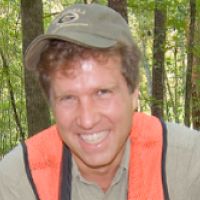Richter et al., 2016
Rapid turnover and minimal accretion of mineral soil carbon during 60-years of pine forest growth on previously cultivated land
Richter, D., M.L. Mobley, S.A. Billings, and D. Markewitz (2016)
American Geophysical Union 2016 Fall Meeting, San Francisco, CA
-
Calhoun, INVESTIGATOR
-
Calhoun, COLLABORATOR
-
Calhoun, INVESTIGATOR
-
Calhoun, INVESTIGATOR
Abstract
At the Calhoun Long-Term Soil-Ecosystem field experiment (1957-present), reforestation of previously cultivated land over fifty years nearly doubled soil organic carbon (SOC) in surface soils (0 to 7.5-cm) but these gains were offset by significant SOC losses in subsoils (35 to 60-cm). Nearly all of the accretions in surface soils amounted to gains in light fraction SOC, whereas losses at depth were associated with silt and clay-sized particles. These changes are documented in the Calhoun Long-Term Soil-Ecosystem (LTSE) study that resampled soil from 16 plots about every five years and archived all soil samples from four soil layers within the upper 60-cm of mineral soil. We combined soil bulk density, density fractionation, stable isotopes, and radioisotopes to explore changes in SOC and soil organic nitrogen (SON) associated with five decades of the growth of a loblolly pine secondary forest. Isotopic signatures showed relatively large accumulations of contemporary forest-derived carbon in surface soils, and no accumulation of forest-derived carbon in subsoils. We interpret results to indicate that land-use change from cotton fields to secondary pine forests drove soil biogeochemical and hydrological changes that enhanced root and microbial activity and SOM decomposition in subsoils. As pine stands matured and are now transitioning to mixed pines and hardwoods, demands on soil organic matter for nutrients to support aboveground growth has eased due to pine mortality, and bulk SOM and SON and their isotopes in subsoils have stabilized. We anticipate major changes in the next fifty years as 1957 pine trees transition to hardwoods. This study emphasizes the importance of long-term experiments and deep soil measurements when characterizing SOC and SON responses to land use change. There is a remarkable paucity of E long-term soil data deeper than 30 cm.
Citation
Richter, D., M.L. Mobley, S.A. Billings, and D. Markewitz (2016): Rapid turnover and minimal accretion of mineral soil carbon during 60-years of pine forest growth on previously cultivated land. American Geophysical Union 2016 Fall Meeting, San Francisco, CA.
 This Paper/Book acknowledges NSF CZO grant support.
This Paper/Book acknowledges NSF CZO grant support.
Explore Further




